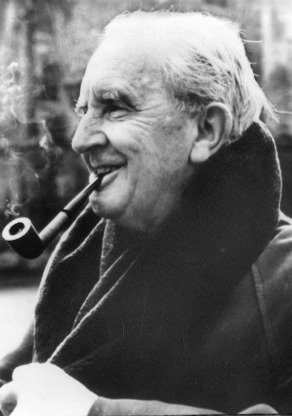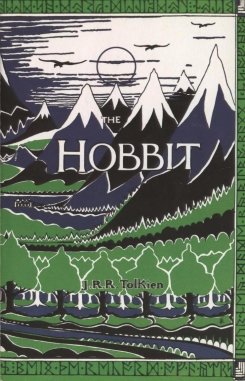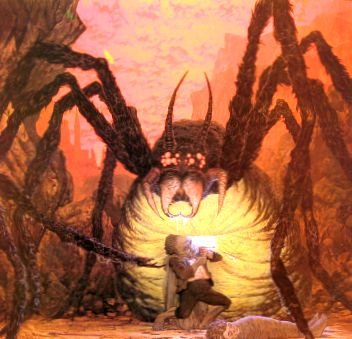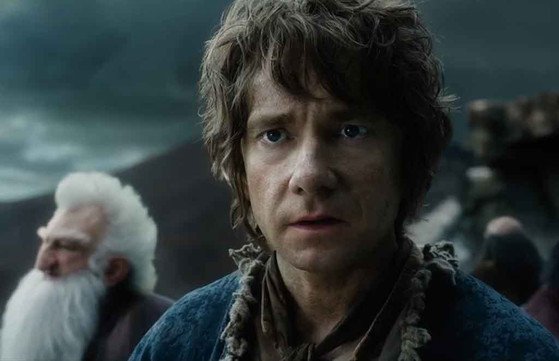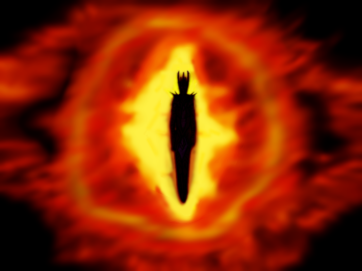The J.R.R. Tolkien Adaptations – A Critical Analysis
While superheroes currently fly about our screens in their dozens, there was a time not so long ago when the hair-clad feet of small adventurers used to fix the public’s imagination. The Lord of the Rings trilogy hit cinemas in 2001 and with the smash success of its following chapters, The Two Towers and The Return of the King the story, J.R.R Tolkien’s masterwork, already immortalized in one of the world’s best-selling series of novels, was renewed for contemporary cinema goers. More recently the brain behind that film franchise Peter Jackson has taken to adapting another of Tolkien’s works; The Hobbit. Taking some creative liberties, Jackson took the events of the novel and turned them into three films to make a prequel trilogy which can stand alongside The Lord of the Rings. It was an ambitious move but Jackson’s ability to adapt Tolkien’s work was surely illustrated in his previous films and pedigrees don’t come much better than that, especially given the weighty nature of Tolkien’s prose.
J.R.R. Tolkien was a philology scholar who wrote prolifically about the nature of medieval English and its literature. He translated works like the Arthurian legend of Sir Gawain and the Green Knight as well as the middle English 16th Century standard Beowulf. There’s no doubt in anyone’s mind that Tolkien was a very clever man indeed. He brought these academic sensibilities to his fantasy writing and in publishing The Lord of the Rings changed the fantasy genre forever. Prior to Tolkien much of fantasy had been reliant on, to grossly generalise, the arches and tropes of European folk stories and fairy tales. Writers like George MacDonald and Lord Dunsany were direct predecessors to this style which Tolkien would help to shift. In many ways Tolkien did for fantasy in the 20th Century what Game of Thrones (and its HBO series) did for it in the 21st.
Tolkien helped to create a sense of reality through order by creating languages which were structured on the same linguistic rules which govern our own. This means that fantastical creatures like elves and dwarves spoke with an authenticity that rang true in the ear of the reader. His Middle Earth is extensively mapped and chartered so that within his descriptions there is never any doubt as to where characters are, what plain they’re standing on, and which mountain range is looming before them. The inclusion of maps into his work is extremely helpful in this regard giving the reader a visual resource to compliment the written descriptions, along which they can trace the course of their favourite characters. Both of these traits are developed alongside an incredibly dense and detailed history, which goes so far back as to feature its own origin myth. I’ve found that this kind of attention to detail, in particular the attention given to describing the natural environment and the historical importance of characters and events, puts many readers off Tolkien’s writing. However, looking at these devices as a development in the fantasy genre, one can see that by establishing fixed geographic and linguistic laws, developed within and alongside a long and storied mythology and history, Tolkien was able to create a world that was fantastical enough so as to engage but familiar enough so as not to alienate. All of these characteristics helped The Lord of the Rings to be something truly unique and refreshing when it was first published and it still captivates readers today. So ground breaking was Tolkien’s approach that it helped to define a sub-genre within fantasy, high fantasy, of which The Lord of the Rings is considered to be the archetypal example.
Like many writers whose works have become renowned and integral additions to the cannon, Tolkien also faced his fair share of disagreement with publishers. After successfully publishing The Hobbit in 1937 Tolkien’s publishers asked for a second story concerning hobbits, magic rings, wizards, and adventure. What he produced for them was an unfinished version of a project he’d been working on for almost fifteen years which outlined the creation, history, and mythology of the universe in which The Hobbit takes place. This work has since become known as The Silmarillion. The publishers thought it to be too outlandish and asked for something with a few more hobbits and, obliging, Tolkien began work on what would eventually become The Lord of the Rings. The now world famous trilogy was published in three volumes over the years 1954 and 1955. Tolkien died in 1970 and would not live to see The Silmarillion published but his son,Christopher Tolkien, also acting as literary executor, working with the notes which his father had left behind, published the work seven years after his father’s death in 1977. Christopher Tolkien would also go on to edit and publish more of his father’s work in The History of Middle Earth which spans an incredible twelve volumes and features much of Tolkien’s unfinished writing as well as possible and divergent narrative threads which differ from their published counterparts.
Tolkien’s universe is vast and dense, and so detailed that any interpretation would have to omit details to be viably entertaining, especially on screen. Adaptation is an art in and of itself and it can be difficult, especially when crossing mediums, to capture the essence of what makes the original work so distinctive, and indeed worthy of adaptation in the first place. One example which springs to mind, of an unsuccessful attempt, is Watchmen directed by Zack Synder. Adapting Alan Moore and Dave Gibbons’ critically acclaimed comic book series Synder fails to invigorate anything new into the story and indeed alters it drastically, omitting characters and changing plot points yet religiously, and somewhat counter-productively, reproduces many of the panel sequences of the original into his shots so that the film reads like a simplified retelling of the story as told by an inarticulate teen. There is a distinct lack of risk as well as a lack of effort to try and adapt the original work to the new medium and in doing so add to the original. In doing so Synder ends up with a cheap imitation which, while complementary of the original, lacks any substance in and of itself. Another example, on the other end of the spectrum, is Under the Skin directed by Jonathan Glazer. The film is an adaptation of a novel of the same name by Michel Faber and it chooses to eschew many of the elements of the original, in particular ignoring the expository nature of prose, and instead fully utilises the visual and aural, the essentially cinematic, elements at its disposal to create a work that, while recognisably based on the original novel, stands on its own as a riveting piece of cinema. Adapting Tolkien for the screen then was never going to be easy but Peter Jackson’s Lord of the Rings trilogy strikes the balance between fidelity to the source text and conversion to a new medium.
The opening sequence of The Fellowship of the Ring is a great example of this. Inspired by the poem which details the history of the rings of power, featured at the beginning of the book, Jackson creates his own sequence which gives the audience a gripping opening and an introduction to the elves, orcs, and other creatures which will be featured throughout the film. The opening of The Two Towers and of The Return of the King are equally as gripping, the first detailing Gandalf’s battle with the balrog of Morgoth and the latter Smeagol’s demise and transformation into the creature Gollum. While not strictly obeying the narrative structure of the books these scenes serve to grip the audience immediately at the films’ opening, convey exposition in an entertaining fashion, and develop narrative strands which will become relevant later on in each individual film.
Jackson also emits large sequences of the books. In particular from The Fellowship of the Ring, where the hobbits wander through the Old Forest on the outskirts of the Shire, and from The Return of the King, where the hobbits return to the Shire and find Saruman has invaded their home. While die-hard fans of the books might be miffed at these omissions, the narrative of the three films collectively and singularly, works seamlessly without them. The narrative order of events is also slightly changed from the original prose, an example being the attack of the giant spider Shelob, which takes place at the end of The Two Towers within the books but features early on in the film version of The Return of the King. The narrative threads of Frodo and Sam’s journey to Mount Doom are also cut with the adventures of the other characters likes Gandalf, Aragorn, and Pippen and Merry also differing from the books where each narrative thread takes place separately in its own volume.
Jackson puts the score to great use in helping to achieve a sense of tonal diversity, especially between locations like the Shire, Rivendale, and Mordor, and helps to capture much of the effect which Tolkien’s prose has within the books implicitly through the music. Howard Shore’s work on the score is also hugely effective in creating a cohesive identity between all three films with the main theme from the trilogy being as recognisable as the theme from Star Wars or Indiana Jones.
The use of soaring aerial shots creates a wonderful sense of location, which harkens back to Tolkien’s keen sense for geographic detail. The meticulous use of location shooting helps to add an implicit sense of character to many scenes so that as characters journey onwards through the narrative, the audience sees more and more of Middle Earth and the location itself becomes an integral character in the films. In recognising the basic characteristic of the quest narrative within the Lord of the Rings trilogy, Jackson keeps the tempo of many scenes quick witted and immediate as characters travel between locations and upon arrival provides enough spectacle through elaborate set design to keep the viewer enticed. There is always consistency in how far and how fast characters can move across Middle Earth which helps in adding to the epic nature of the story as even the most charismatic of characters are dwarfed by the enormity of Middle Earth.
Overall The Lord of the Rings trilogy succeeds in its attempt to adapt prose onto the screen. Jackson’s trilogy conveys the tone which made the books so outstanding, less antiquated whimsy and more medieval grunge for the screen and while not a religious adaptation the divergences from the source material serve to illustrate a genuine attempt to render the story in a truly cinematic fashion. Peter Jackson could never be accused of not being enthusiastic especially with the release of the extended editions of the films which feature many scenes which were left on the cutting room floor and not included in the theatrical release. The editing process which took place for the theatrical release was appreciated by many, although the ending of The Return of the King was criticised for its length, while the extended cuts were still available to those few enthusiastic enough about the material with the time to spend watching all of it.
While viewing The Lord of the Rings the enthusiasm with which the creators undertook the challenge of adapting the trilogy to celluloid is almost tangible. They, like many others, love the story that they are telling. This quality sadly, however, does not permeate the entire hexology of films which now includes the three prequels to The Lord of the Rings in The Hobbit Trilogy.
Adapting a single book into a trilogy was always going to be difficult, especially when you take into account the almost manic inclusion of details from the source material which Jackson sought in The Lord of the Rings. Jackson was required not only to stretch the events of a single, relatively simple novel, to fill three separate narratives but then also to restructure that material so each individual narrative possessed dramatic tension, character arcs, and a conclusion in its own right. This process was handled well in The Lord of the Rings but adapting a trilogy of books into a trilogy of films does lend itself to the process for the obvious structural similarities. The Hobbit trilogy suffers from these attempts as there just isn’t enough material to make three solid narratives. As such, Jackson was forced to borrow narrative strands from The Lord of the Rings and when unable to do so, create his own.
In An Unexpected Journey scenes of the White Council, which are alluded to in Tolkien’s writing, are staged onscreen and help to lend the events of The Hobbit films a sense of gravitas in terms of linking them to the events which will follow in The Lord of the Rings. Elrond, Saurman, and Galadriel don’t take up a huge amount of screen time but their appearances feel less like a cameo and more like a genuine attempt at trying to convey the shared universe which exists between all six films. As the trilogy continues however these scenes, along with the roving of Gandalf, are merged to produce a basterdised origin story for Sauron which leads directly into The Lord of the Rings and has little direct effect on the other events which are taking place alongside it. This process comes to its somewhat ridiculous conclusion in a graphics laden fight scene in the final installment, The Battle of the Five Armies, where we see (it has to have been a stunt double) Christopher Lee break it down with the nine spectral ring bearers of men, who will eventually materialise as the ring wraiths in The Fellowship of the Ring.
The addition of supplementary elvish characters to the films, Orlando Bloom as Legolas and Evangeline Lilly as Tauriel, are also unnecessary, especially when there is an established cast of twelve dwarves, ten of whom receive no character development other than the characteristics which their prosthetics imply. Given the prominent role and amount of screen time which is dedicated to Legolas it becomes apparent that Jackson has departed from his original intention to adapt The Hobbit as a work worthy in and of itself but instead is using the films as an auxiliary support in expanding the cinematic universe of The Lord of the Rings trilogy. This isn’t an especially surprising move seen as properties like Marvel’s superheroes now have the freedom to walk into each other’s sequels and prequels as they wish and the idea of shared cinematic universes existing between franchises is a definite reality, however it is disappointing and it hinders The Hobbit trilogy from ever really standing on its own.
The Desolation of Smaug features several narrative arcs which are contrived attempts to fill out the failing structure of the trilogy. These include Legolas, Stephen Fry as the Master of Laketown, and the romance between dwarf Filli and Tauriel. It’s unfortunate that many of these arcs carry over into The Battle of the Five Armies. While the middle section of the trilogy is a process of narrative loaves and fishes, it’s in the conclusion where the inconsistencies between the different narrative strands, and more so the irregularities within the tonal shifts of the trilogy, are most obvious.
The Hobbit was written many years before The Lord of the Rings and was intended for an audience of children and so it differs greatly in tone from The Lord of the Rings trilogy, which are far darker books. Tolkien actually made alterations to later publications of The Hobbit so as to try and create greater consistency between the two. Jackson does much the same with his cinematic version with the addition of the White Council, Sauron, and Legolas, with scenes including Gollum provided by the source material. These additions are, however, given credence over original content, which isn’t necessarily a bad thing, but all of the additions do carry a knowing seriousness due to the fact that they are foreshadowing the events of The Lord of the Rings, events which will endanger all of Middle Earth, and as such they skew the dramatic tension built up around actions of the characters in The Hobbit films. They also stand out as inconsistent when viewed beside the antics of the singing plate juggling dwarves shown in An Unexpected Journey and so the entire trilogy suffers from an undecided vision which is at once comedic, Billy Connolly riding a pig, and dark, Gandalf’s battle with Sauron the Necromancer. By the end of The Battle of the Five Armies no cohesive direction has become obvious and so Jackson relies on establishing more overt connections between The Hobbit and The Lord of the Rings and avoids having to actually bring any sense of closure to the narrative which he started three films ago considering everything is pretty much summed up in The Lord of the Rings.
The scoring of the trilogy also doesn’t help with this sense of disruption. Howard Shore’s work on The Lord of the Rings helped to create an expansive, but more importantly, a cohesive aural quality for the films so that each film, while unique, was recognisably part of a greater story. Returning for The Hobbit Shore establishes many of character motifs in An Unexpected Journey but then surprisingly fails to utilise them in The Desolation of Smaug or The Battle of the Five Armies. This hinders the films from having any recognisable sound or theme and also goes on to contribute to the lack of tonal cohesion between and within the films.
While Jackson obviously stands by the project, it would be interesting to have seen Guilmerro Del Toro’s vision of the story onscreen. Originally, before Del Toro pulled out of directing the adaptation, the series was set to be comprised of two instalments, which Jackson later changed to three. This being said there are many aspects of The Hobbit franchise which do work; Martin Freeman’s turn as Bilbo Baggins is truly excellent. He manages to ground the experience of being a hobbit out of water with a likeable charm which never feels as quaint as Samwise or as oddly profound as Frodo. Ian McKellen continues to flesh out his interpretation of Gandalf as wise but grumpy and is delightful to watch. Richard Armitage brings a more serious tone to the brooding Thorin Oakensheild which manages to bolster his fellow dwarves rather than make them look ridiculous and his performance, especially in The Battle of the Five Armies, helps to ground the film in a relatable dramatic character arc.
The somewhat psychedelic rendering of Sauron as the Necromancer is also extremely engaging and impresses the psychological menace of the character and his immensity as an entity whose outer boundaries are only defined by his near infinite inner malice. The menace of Sauron is palpable but in no way does it directly affect the other events of the film and tonally stands as significantly more profound than the other narratives. Benedict Cumberbatch does an impressive job voicing both the Necromancer as well as Smaug but visually the dragon is depicted in a drab manner with the possibility of his narrative importance being squandered thanks to the break between The Desolation of Smaug and The Battle of the Five Armies. Having watched the trilogy it’s hard to see what desolation, if not minor occurrences, were caused by the dragons presence. As a fan of dragons in cinema this was particularly disappointing aspect of the trilogy. Similarly the titular battle from The Battle of the Five Armies is a bit of a non-event as it drags through most of the film and is relaxed enough for a lot of dialogue to take place within. One scene in particular is quite disappointing. Tauriel is held aloft by the neck by an orc boss who licks his lips as he attempts to throttle her. This seemingly small gesture shatters the illusion of Tolkien’s world. While not exactly progressive in its depiction of women, seen as there are only a few who feature between all six films, the threat of sexual violence against a woman seems to be a careless inclusion of a regressive and jaded cliché illustrating a damaging carelessness which has crept into the films as they were made, as well as cheapening a character who is already loose on characterization as it is. It is a far cry from the standoff between Éowyn and the Witchking of Angmar which takes place in The Return of the King.
Despite some redeeming qualities The Hobbit franchise is stacked with disappointing moments like these which neither compare to the Lord of the Rings nor stand very well on their own. Comparatively the Hobbit films lack the same gravitas and cohesion which make The Lord of the Rings so thrilling. Standing on their own the skewed narrative betrays the high production values and they are average fantasy adventure fare, at best. Most disappointingly as an adaptation they fail completely. While Jackson has attempted to be faithful to his text he has grafted the sensibilities of the previous adaptation onto The Hobbit so that it is caught between trying to be its own series of films while desperately trying to fit into another series and, stuck somewhere between the two, it fails to achieve either.
While the end product is really quite disappointing one can’t help but feel that there was an honest attempt made to capture some of the earnest fascination with Tolkien’s work which permeates The Lord of the Rings in The Hobbit trilogy. It all too often seems to be the case now however that studios will call for the production of projects which they think are sure fire bread winners. This was the case with The Hobbit trilogy. There seems to be a distinct lack of an editorial voice within Hollywood cinema who speaks up for artistic integrity and credibility. Sadly the Hobbit trilogy was hugely successful at the box office and so the intentions of executives have been realised. Harkening back to Tolkien’s writing we can see that even he, the mild mannered pipe smoking medieval middle English enthusiast, was hindered in his attempt to publish what would later become The Silmarillion. Editors thought it was too much too soon and, right or wrong, that decision helped to form the much loved story of The Lord of the Rings. Perhaps it is folly to wish that the film industry, and in looking at films like An Unexpected Journey, The Desolation of Smaug, and Battle of the Five Armies the industry becomes all too obvious, would exercise restraint in its choice and management of productions. Unfortunately this has not been the case and as such fans of The Hobbit and The Lord of the Rings now have a half-hearted hexology to judge for themselves.
I can’t help but wonder what Tolkien himself would have to make of all this. No doubt he’d have some words of wisdom with which to elucidate us all but unfortunately we’ll never know. Thankfully we do have the many publications he left us and, in place of failed filmic adaptations, I suppose that will have to do, as it always has.

